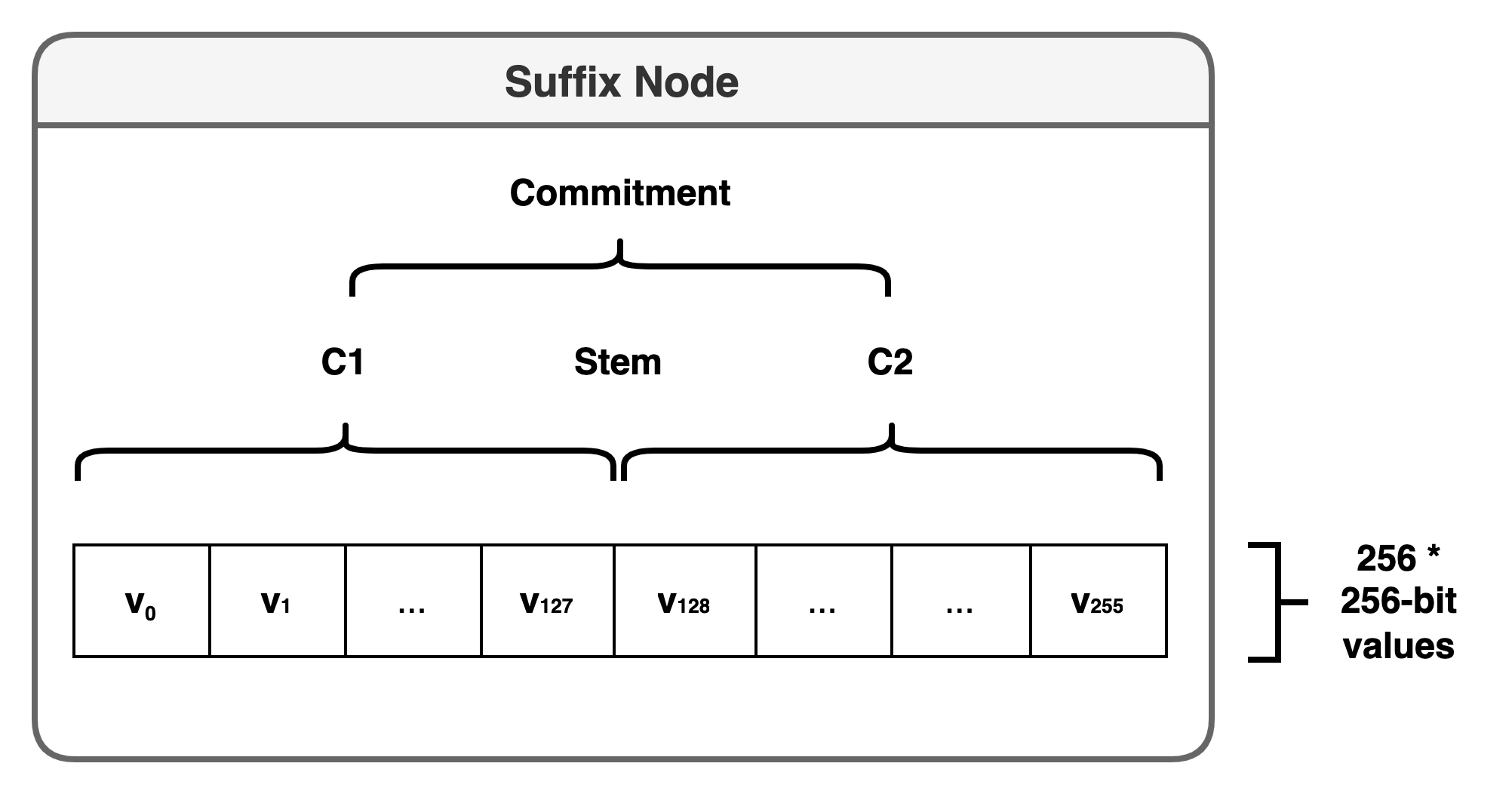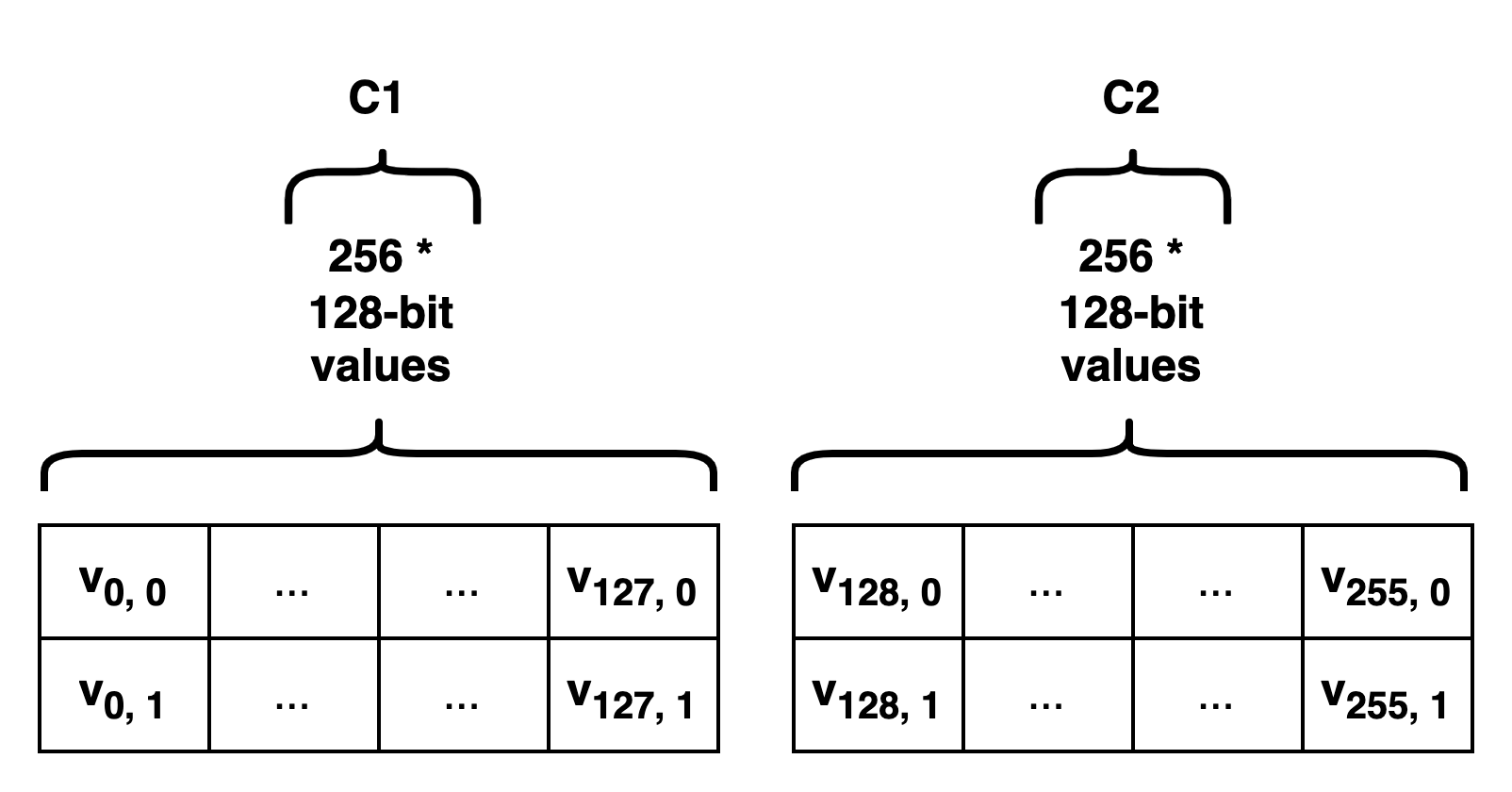Suffix Node Commitment
To generate the suffix node commitment, we use a nested Pedersen commitment (a Pedersen commitment of the Pedersen commitments and ).

Figure 1. Suffix node
We cannot use a single flat Pedersen commitment over all the suffix node values because the implementation specified in the EIP is limited to committing 256 values of up to 253 bits in size. This is a mismatch with the suffix node storing 256 values of up to 256 bits (or 32 bytes) in size.
So to avoid losing 3 bits of information per key-value pair, we split each 32-byte/256-bit value into two 128-bit halves, resulting in 512 elements of 128-bits in size. is the Pedersen commitment of the first batch of 256 of these 128-bit half-elements, and is the Pedersen commitment of the second batch.

Figure 2. Suffix node values split into 128-bit halves
Pedersen commitments can be converted to a 253-bit value (through the group_to_field method defined in the EIP), so we can proceed to create a 'higher-order' Pedersen commitment of both and . The suffix node commitment is defined as the Pedersen commitment of the 256-length array [1, stem, C1, C2, 0, 0, ..., 0].

Figure 3. Suffix node commitment
The EIP specifies that the Bandersnatch elliptic curve be used to generate Pedersen commitments, which is where the 253-bit size limit comes from. The Bandersnatch elliptic curve allows for more efficient zero-knowledge operations, and is used in verkle tries to facilitate zero-knowledge based optimizations in the future. In contrast the secp256k1 elliptic curve used in the original Ethereum protocol is less zero-knowledge friendly and hence less future-proof.